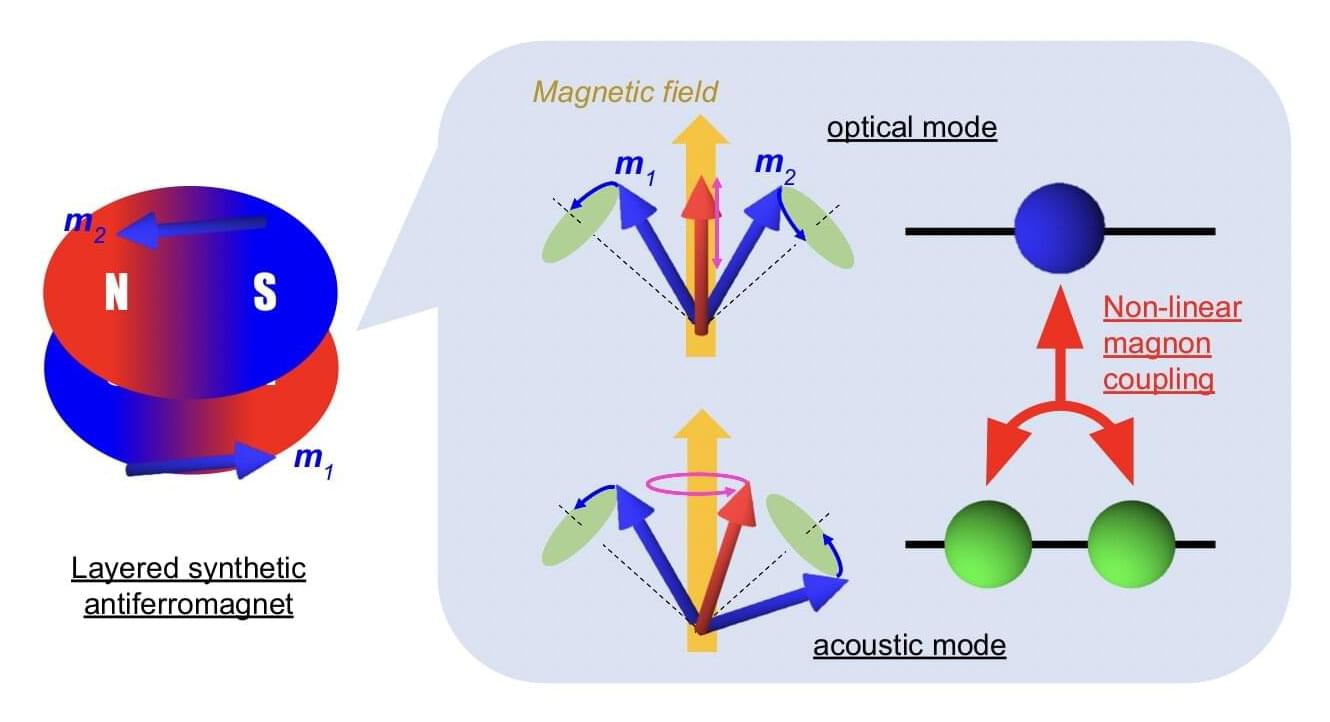Synthetic antiferromagnets are carefully engineered magnetic materials made up of alternating ferromagnetic layers with oppositely aligned magnetic moments, separated by a non-magnetic spacer. These materials can display interesting magnetization patterns, characterized by swift changes in the behavior of magnetic moments in response to external forces, such as radio frequency (RF) currents.
When the magnetization of each layer in synthetic antiferromagnets is disturbed by an external force, its magnetic moments start to “precess,” or in other words, to rotate around their equilibrium direction. Past studies have identified two primary collective spin oscillation modes in synthetic antiferromagnets, influencing how magnetic moments precess.
The first is the acoustic mode, characterized by the synchronized rotation of ferromagnetic layers in the same direction and phase. The second is the optical mode, in which ferromagnetic layers rotate in opposite directions (i.e., with one layer’s magnetization tipping up and the other down).
